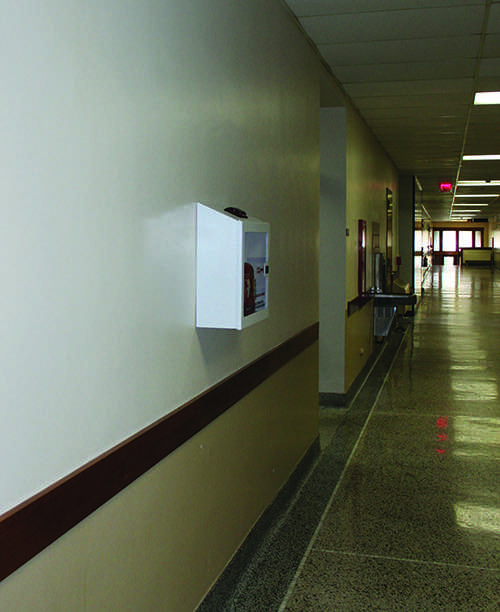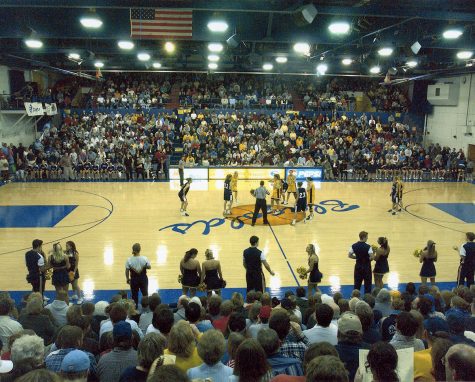Nine new AEDs to be installed around UW-Eau Claire
Various university buildings that previously did not have automatic external defibrillators will have the devices by the end of the month
The process of replacing AEDs on campus should be complete by the end of the month. The devices are placed in convenient locations, such as across from the Schofield Auditorium in Schofield Hall.
By the end of this month, UW- Eau Claire will house nine new automatic external defibrillators throughout university buildings, which previously had none.
“We just got authorization to purchase nine new AEDs,” Director of Loss Prevention and Safety John Baltes said. “The goal was to place them in buildings that didn’t have any.”
The new devices will be all over campus, including one in the College of Nursing and Health Services building and two in Hibbard Hall, Centennial Hall, Schneider Hall and L.E. Phillips Science Hall.
Baltes said the cabinets that hold the AEDs will be installed by the end of September.
The cost of each of these units is roughly $1,600, which includes the defibrillator, the wall signs, the cabinet and the response kit. The kit includes a razor, a pair of scissors, disposable gloves, mouth barrier for CPR, alcohol wipes and a quick reference guide.
The $14,400 investment in AEDs will raise the total on campus to 33 units.
To get the new units, Baltes said he put in a request from a reserve fund, which was granted by Vice Chancellor for Administration and Finance Marty Hanifin.
The Office of Loss Prevention and Safety maintains the AEDs, and is instructing individual building coordinators on how to maintain the units.
According to the American Red Cross, 50,000 people could be saved every year from AEDs and 350,000 people suffer from cardiac arrest yearly. This is one of the reasons Baltes believes having AEDs available throughout campus is vital, he said.
“Five or six years ago a man died from a heart attack in Haas Fine Arts Center,” Baltes said. “Students were outraged that there wasn’t an AED in the building and they took their concerns to the chancellor.”
Baltes said the student’s voice on the issue carried weight and helped add units to the campus over the last six years.
“For each minute defibrillation is delayed, it reduces chances of survival by ten percent,” Baltes said.
Already existing AED locations on campus include the first three floors of Davies Center, six devices in McPhee Physical Education Center and one in Hilltop Center, Bollinger Fields, Crest Wellness Fitness Center and the ropes course.
Additional locations are the Human Sciences and Services building, Haas Fine Arts Center, the Children’s Nature Academy, McIntyre Library, the main hallway of Facilities Management, as well as the University Police squad cars.
Baltes hopes none of the units will have to be used out of necessity, but wants the campus equipped in case of an emergency.
Baltes said local firefighters have great response times whenever they’ve been called to campus, but in dire situations, students should be ready to step up and try to help.
“The units feature a voice guiding the user step by step through the process,” Baltes said. “There’s no reason anyone should be intimidated to use the AED.”










